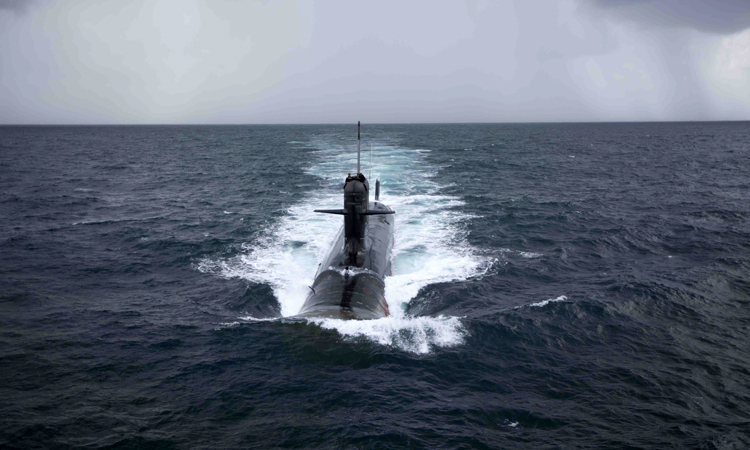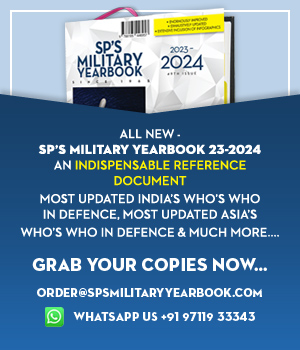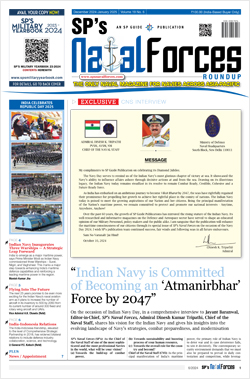INDIAN ARMED FORCES CHIEFS ON OUR RELENTLESS AND FOCUSED PUBLISHING EFFORTS

The insightful articles, inspiring narrations and analytical perspectives presented by the Editorial Team, establish an alluring connect with the reader. My compliments and best wishes to SP Guide Publications.

"Over the past 60 years, the growth of SP Guide Publications has mirrored the rising stature of Indian Navy. Its well-researched and informative magazines on Defence and Aerospace sector have served to shape an educated opinion of our military personnel, policy makers and the public alike. I wish SP's Publication team continued success, fair winds and following seas in all future endeavour!"

Since, its inception in 1964, SP Guide Publications has consistently demonstrated commitment to high-quality journalism in the aerospace and defence sectors, earning a well-deserved reputation as Asia's largest media house in this domain. I wish SP Guide Publications continued success in its pursuit of excellence.
- MoD initiates comprehensive review of Defence Acquisition Procedure 2020, pushes for defence reforms
- G7: The Swansong
- Kalinga Connect: South Asia to Polynesia
- Advanced MRSAM for India for a greater firepower
- Must Credit DRDO for Operation Sindoor, now what is next for defence R&D?
- Operation Sindoor | Day 2 DGMOs Briefing
- Operation Sindoor: Resolute yet Restrained
India to design and build its own submarines after Project 75(I)
Technology gap to be bridged with forthcoming programme, agenda to build platforms without foreign assistance in future

The strategic industrial objective of Project 75 (I) is to ensure that India will thereafter be able to design and build submarines on its own without foreign assistance, the Indian Navy's Controller of Warship Production & Acquisition Vice Admiral AK Saxena has declared.
India on June 20 flagged off a 45,000 Crore ($6.6 Billion) programme to build a new line of six conventional submarines under Project 75 (I) under the Strategic Partner model, which pits Indian public sector and private sector shipyards against each other.
An Expression of Interest (EoI) for shortlisting of potential Indian Strategic Partners was issued. The technology for building the submarine will be provided by a foreign OEM. A parallel process will shortlist foreign OEMs which potential Indian Strategic Partners can team up with to submit competitive bids. There will be an option for a follow-on order for six additional submarines.
With the exception of a contract in October 2018 to import two Gregorivich class frigates (follow-on Krivak class) from Russia, India no longer imports surface ships but builds on its own. It has now set itself a similar goal for submarines
"The first time that technology was transferred to India to build submarines was under (the ongoing) Project 75 (to build six Scorpene submarines). After 75(I), we should have the capability to design and build submarines on its own. The EoI states what is expected in terms of technology transfer under Project 75 (I)," Vice-Admiral Saxena said while responding to media queries at a press conference in New Delhi on July 8 to announce an international seminar on 'Nation Building Through Shipbuilding'.
The transfer of technology in the course of Project 75(I) is expected to bridge the capability gap in India to build submarines on its own. With the exception of a contract in October 2018 to import two Gregorivich class frigates (follow-on Krivak class) from Russia, India no longer imports surface ships but builds on its own. It has now set itself a similar goal for submarines.
Like for its surface warships, India would seek foreign assistance in its future submarine building programmes only in terms of weapons, surveillance and propulsion systems while building the platform on its own
A submarine design bureau functions under the Controller of Warship Production & Acquisition, and it is preparing itself for the future.
Like for its surface warships, India would seek foreign assistance in its future submarine building programmes only in terms of weapons, surveillance and propulsion systems while building the platform on its own.
The indigenisation requirement under Project 75(I) will be 50 per cent. "The indigenous content will be scaled up to 50 per cent progressively," Vice-Admiral Saxena, who headed the Empowered Committee which formulated the EoI stipulating the technology transfer requirements. The indigenisation goal for the ongoing Project 75 is 30 per cent by the time the sixth submarine is built.
The Controller of Warship Production & Acquisition said "long deliberations with OEMs will take two-to-three years or more".
The indigenisation requirement under Project 75(I) will be 50 per cent. "The indigenous content will be scaled up to 50 per cent progressively," Vice-Admiral Saxena, who headed the Empowered Committee which formulated the EoI stipulating the technology transfer requirements. The indigenisation goal for the ongoing Project 75 is 30 per cent by the time the sixth submarine is built
The next stage in the Project 75(I) process is issuance of a Request for Expression of Interest to foreign OEMs as technology partners for the project.
The French Naval Group - which is delivering on the 2005 contract for building six Scorpene submarines at Mumbai's Mazagon Docks Limited - German ThyssenKrupp (erstwhile HDW), Swedish Kockums and Russian Rosboronexport/United Shipbuilding Corporation) are likely to be invited to participate in the process.
A shortlisted Indian company can tie up with only one foreign OEM to submit a bid but a foreign OEM can partner more than one Indian Strategic Partner contender.





